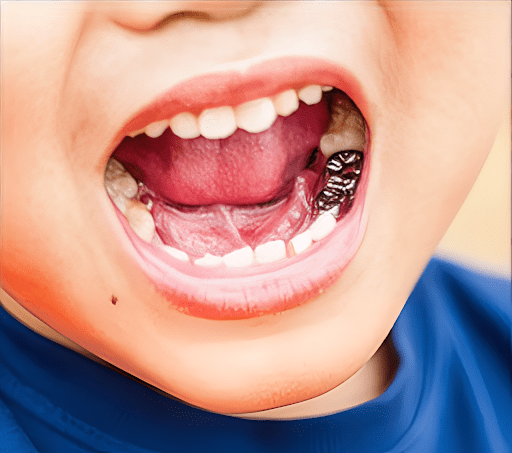What Are Pediatric Dental Crowns and When Does Your Child Need One?
A bright, healthy smile is one of the most important parts of childhood. Strong teeth not only make eating and speaking easier but also support proper growth, confidence, and overall well-being. Unfortunately, children’s teeth can sometimes be affected by decay, cavities, or accidental injuries. In these cases, a pediatric dental crown may be the best way to protect and restore your child’s tooth.
In this detailed guide, we’ll explore what pediatric dental crowns are, why they’re used, the different types available, how the procedure works, aftercare tips, and most importantly—when your child may truly need one.
What Is a Pediatric Dental Crown?
A pediatric dental crown is a tooth-shaped cap placed over a child’s damaged or decayed tooth to restore its strength, shape, and function. Unlike adult crowns that are often used for cosmetic reasons, pediatric crowns primarily serve to protect and save baby teeth until they naturally fall out.
Many parents wonder, “If baby teeth are temporary, why not just remove them?” The truth is, baby teeth play a vital role in your child’s oral development. They act as placeholders for permanent teeth, help in proper chewing and speech development, and guide the correct alignment of adult teeth. Losing them too early can cause long-term dental issues.

Why Baby Teeth Sometimes Need Crowns
Baby teeth, also known as primary teeth, are softer and more prone to decay than permanent teeth. Here are some common situations where a pediatric dental crown becomes necessary:
1. Extensive Tooth Decay
If a cavity has spread across a large portion of a tooth, a simple filling might not be enough to restore strength. A crown covers the entire tooth, preventing further decay and breakage.
2. After a Pediatric Root Canal (Pulpectomy)
When decay reaches the pulp (nerve) of a baby tooth, a pulpectomy or root canal is often performed. To protect the treated tooth, dentists usually place a crown afterward.
3. Broken or Fractured Teeth
Children can be adventurous, and accidental falls or injuries may crack or chip their teeth. A crown restores both appearance and function.
4. Developmental Defects
Some children are born with weaker enamel (enamel hypoplasia) or other dental defects. Crowns can strengthen these teeth and prevent future damage.
5. High Risk of Cavities
For children with multiple cavities or those who struggle with oral hygiene, crowns can offer extra protection.
Types of Pediatric Dental Crowns
Parents often ask, “What type of crown is best for my child?” The answer depends on the location of the tooth, the extent of damage, cost, and cosmetic concerns.
1. Stainless Steel Crowns (SSCs)
- Most common option for baby teeth
- Durable, affordable, and quick to place
- Usually placed on back molars (not very visible)
- Ideal for children with extensive decay
2. White Zirconia Crowns
- Tooth-colored crowns that look natural
- Highly durable and stain-resistant
- Often chosen for front teeth for cosmetic reasons
- More expensive than stainless steel
3. Resin Veneered Crowns
- Stainless steel crown with a tooth-colored coating on the front
- A mix of durability and better appearance
- May chip over time, but still a popular option
4. Polycarbonate Crowns
- Aesthetic, temporary crowns
- Often used until a permanent solution is placed
- Less durable compared to zirconia or stainless steel
The Procedure: How Are Crowns Placed on Kids’ Teeth?
Understanding the process helps parents prepare their children and reduce anxiety. Here’s what usually happens:
- Examination and X-rays
The dentist examines the tooth and may take X-rays to assess the extent of decay or damage.
- Anesthesia and Sedation (if needed)
Local anesthesia is applied to numb the tooth. For anxious children, mild sedation or nitrous oxide (“laughing gas”) may also be used.
- Tooth Preparation
The dentist removes decay and shapes the tooth so the crown can fit properly.
- Crown Placement
The selected crown is adjusted and cemented over the tooth. - Final Check
The dentist ensures the crown fits comfortably and doesn’t affect the bite.
The procedure is quick—often completed in one visit.
Is It Safe for Kids?
Pediatric dental crowns are very safe and widely used in children’s dentistry. Materials like stainless steel and zirconia are biocompatible, meaning they don’t harm the body. Pediatric dentists are trained to ensure the procedure is painless and comfortable.
For children with special needs or severe dental anxiety, advanced behavior management techniques and sedation dentistry can make the process smoother.
Benefits of Pediatric Dental Crowns
- Protects Tooth Structure: Prevents further decay or fracture.
- Maintains Natural Alignment: Keeps space for permanent teeth.
- Restores Function: Makes chewing and speaking easier.
- Boosts Confidence: Especially important when front teeth are restored with tooth-colored crowns.
- Cost-Effective in the Long Run: Prevents repeated fillings and treatments.
Caring for Pediatric Crowns at Home
After the procedure, parents can help ensure the crown lasts until the tooth naturally falls out:
- Encourage gentle brushing around the crown.
- Avoid sticky or hard foods (like caramel or ice) that may loosen crowns.
- Teach your child to avoid chewing on non-food items like pencils or nails.
- Maintain regular dental checkups every six months.
If a crown comes loose or causes discomfort, contact pedodontist immediately.
Special Needs Dentistry and Crowns
Children with autism, ADHD, Down syndrome, or other conditions may have a higher risk of cavities due to oral care challenges. Pediatric dentists trained in special needs dentistry provide crowns in a way that is safe, compassionate, and tailored to each child’s needs.
When Should You Consider Pediatric Dental Crowns?
You should consult a pediatric dentist if your child has:
- Severe tooth decay not treatable with fillings
- A broken or cracked tooth
- Sensitivity or pain in a tooth with previous fillings
- A tooth that required a pulpectomy (baby root canal)
- Developmental enamel defects
Frequently Asked Questions (FAQs)
Q1. How long do pediatric crowns last?
Most crowns last until the baby tooth naturally falls out.
Q2. Will my child feel pain after the procedure?
Some mild soreness may occur, but it usually subsides in a day or two.
Q3. Are crowns expensive?
Stainless steel crowns are affordable. Tooth-colored crowns cost more but may be covered by insurance if medically necessary.
Q4. Can my child eat normally after getting a crown?
Yes, though it’s best to avoid hard or sticky foods.
Pediatric dental crowns are not just about fixing a tooth—they’re about protecting your child’s smile, comfort, and long-term oral health. Whether it’s due to cavities, injury, or developmental issues, crowns provide a safe and effective way to save baby teeth until they’re ready to fall out naturally.
At Kidzone Dental, we specialize in gentle, child-centered dental care. Our team is here to answer your questions, ease your child’s anxiety, and provide the right treatment for their needs.
If you think your child might need a crown, don’t wait. Make an appointment today and give your little one the healthy, happy smile they deserve.








